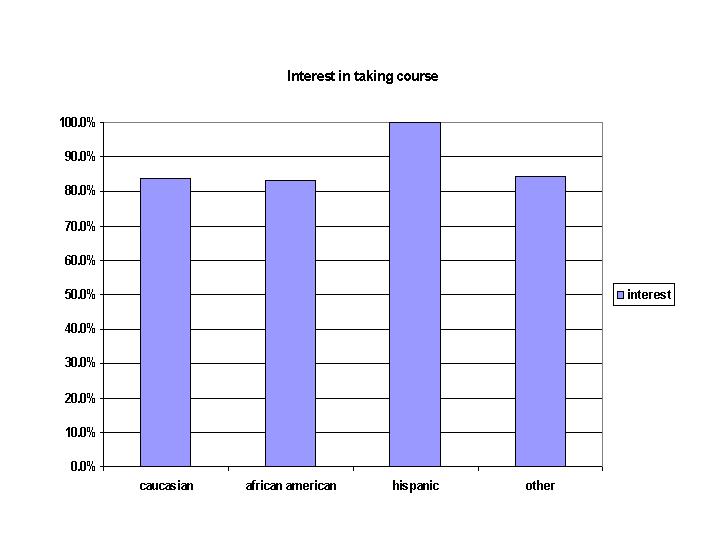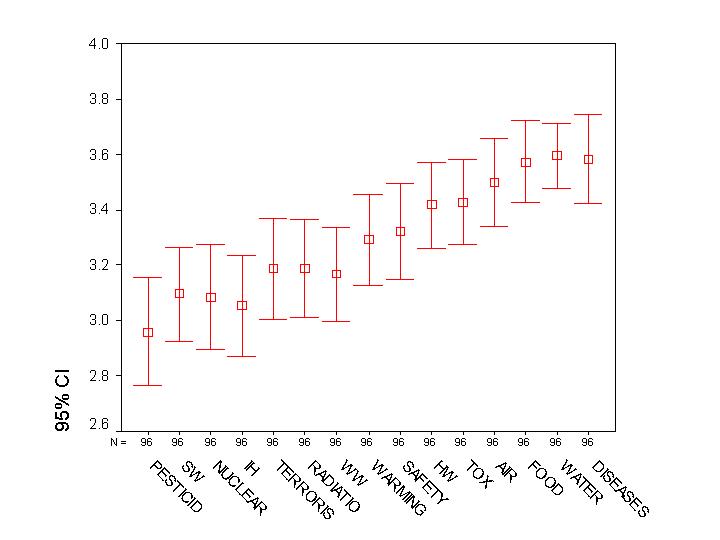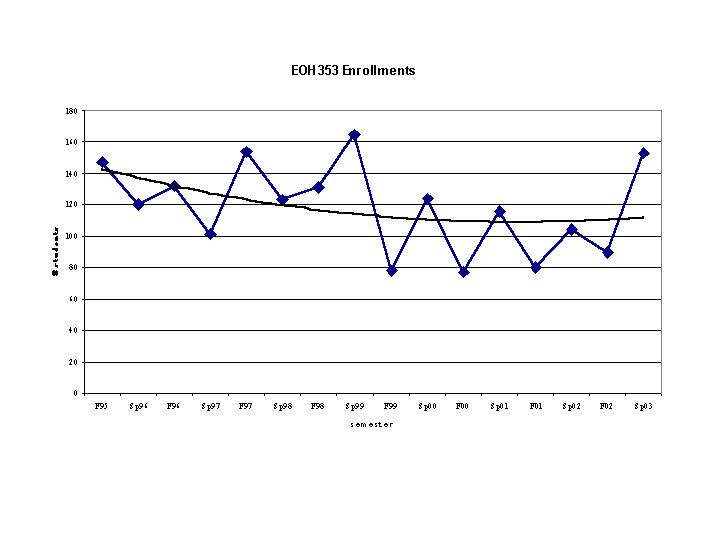

Goal/objectives of the project
Our overall goal is to help increase the cultural and ethnic diversity in our profession - not only at our university, but throughout the nation. This involves three primary objectives:
- to identify, through survey and statistical analysis of our current students, the key recruiting factors among various diversity groups;
- to develop effective recruiting tools based on the key recruiting factors identified in our survey (as well as proven recruiting techniques in the literature); and
- to implement these recruiting tools by building on our existing partnerships in the community and around the nation.
Los Angeles is well known for its diverse population. Los Angeles County ranks first in the nation for its total population of Hispanics. Similarly high rankings are reported for virtually every ethnic and cultural group in Los Angeles County. If reasonable commuting distance is also considered, our university draws from an extremely large and diverse population in southern California - indeed, one of the largest in the world. While distributions will vary among specific ethnic and cultural groups, the overall conclusion is essentially the same - L.A. is extremely diverse.
Los Angeles has a large population living in poverty. Again, a significant and concentrated population lives directly east of our university, but an extremely large population lives within reasonable commuting distance of our university.
CSUN has a large population of students rich in diversity. With over 32,000 students, CSUN is one of the largest universities in the nation. Not surprisingly, this large population in a culturally diverse area translates into a diverse population at our university. We rank among the top 20 universities in the nation for overall diversity (including 11th in the nation for Hispanics). We are proud of our diversity and the educational opportunities that we provide to a wide range of well deserving students.
Our department has the largest diversity enrollments in the nation. Even when we account for the rich diversity of our community and university, our program contributes a disproportionately large amount of diversity within our profession. The numbers suggest that our university contributes:
- over 1/2 of the nation's Hispanic undergraduates
- over 1/2 of the nation's Asian/Pacific Islander undergraduates
- over 10% of the nation's African-American undergraduates
We are easily the most diverse EHAC-accredited program in the nation, with the highest numbers of Hispanic and Asian students in the nation. For African-American students, we are second only to Mississippi Valley State.
When we include the accredited graduate programs, however, an even stronger picture emerges. Although diversity numbers were not reported for EHAC-accredited graduate programs, we can extrapolate the known percentages of undergraduate programs to the total numbers of reported graduate students for a reasonable approximation. For EHAC-accredited graduate programs, the numbers suggest that our university contributes:
- 1/2 of all the African-American graduate students;
- virtually all of the Asian graduate students
- virtually all of the Hispanic graduate students
Overall, we therefore contribute:
- almost 1/2 of the diversity for all EHAC-accredited undergraduate programs
- almost 3/4 of the diversity for all EHAC-accredited graduate programs
A great deal of work has already been done in risk communication to different cultural groups, and this work has direct ramifications on recruiting activities. Specifically, a major model for understanding the cultural differences in communication is the distinction between "collectivist" and "individualistic" cultures. Most Hispanic cultures, for example, appear to represent a collectivist culture, while most European cultures appear to represent an individualistic culture.
Collectivist cultures tend to pay more attention to context. For example, collectivists pay more attention to so-called paralinguistics (emotional expression, gestures, touching, distance between bodies, body orientation, level of voice, and eye contact). Individualistic cultures, in contrast, tend to pay more attention to the message itself (i.e., its clarity and persuasiveness). Typically, the best arguments are presented first to raise interest in the argument. In contrast, the collectivist cultures tend to pay more attention to the messenger. Typically, the messenger starts with peripheral arguments and saves the best arguments for last.
Thus, messages will be more successful if delivered by a messenger from the same ethnic group. They will also be more successful if they are in the native language of the ethnic group. Of course, there is as much diversity within cultural groups as there is across cultural groups, and effective messages must consider these differences as well. The diversity within subgroups is not only from national origin (e.g., Mexican-American, Puerto Rican, etc.) but also from socioeconomic status, level of education, place of residence (urban or rural), and level of acculturation.
The fundamental innovation in this proposal is that we will incorporate this latest research on effective risk communication into recruitment activities. Specifically, we recognize the need for diversity among the messengers, and we are in an outstanding position to utilize messengers of diverse backgrounds in our recruiting messages. Not only is this expected to be effective in our own recruiting activities, but research suggests it should be effective outside our university and across the nation.
The CDC and ATSDR's work force are significantly below the Civilian Labor Force national average for representation of American Indians and Hispanics. CDC and ATSDR workforce data also indicates that all minority populations are under-represented in most positions at the grades 13-15 levels, which is particularly relevant to our arguments regarding graduate students.
While AEHAP is devoted to undergraduate programs, the role of graduate programs remains critical to the national goals at CDC, ATSDR, and other agencies. Thus, we feel it is critical to include graduate students in our analysis and recruitment. One final note: by any reasonable measure, CSUN plays a critical role in ethnic and cultural diversity in the profession. While we welcome more accurate statistics, our role is already clearly established.
After requesting information on gender, ethnicity, and academic major , we asked participants the following questions:
- Were you aware of the EH profession when you were at the freshman or sophomore university level?
- If you had known it were available, would you have had any interest in taking an introductory course in EH during your freshman or sophomore years?
- Briefly explain how you first become aware of environmental health (e.g., from a friend or family member, an introductory course in EH, a web site, job fair, brochure, newspaper article, etc.)
In the second half of the questionnaire, we asked participants to rate their interest in environmenal health topics on a scale of 1 to 4, where
- 1 = not especially interested
- 2 = somewhat interested
- 3 = moderately interested
- 4 = very interested
The topics are listed below:
- Bioterrorism
- Global warming
- Food safety
- Pesticides
- Industrial hygiene
- Safety and Accident prevention
- Toxicology
- Communicable diseases
- Hazardous wastes
- Solid wastes
- Air pollution
- Water quality
- Wastewater
- Radiation
- Nuclear power
The first table shows a relatively low level of awareness of the environmental health profession. For all groups, the majority was not aware of the environmental health profession in their freshman or sophomore years in the university.
The next table shows that, for every represented group, there was a high level of interest in our introductory course in environmental health. This suggests that there is already a high level of interest in our profession. The problem is therefore one of awareness, not general level of interest.

The next table show the mean and standard deviation in the interest for each of the environmental health topics. Notice that there is a high level of interest in all the topics. While there are not statistically significant differences between adjoining topics, there is a statistically difference between that highest and lowest rated topics.

The next table shows ethnic differences in interest among topics. It is important to point out that there is a high level of interest for all the topics, and generally there were not statistically significant differences (we only show where there were differences). This table show that, if there are differences, it is that there is a higher level of interest among our hispanic students.
The results from the survey were used to develop rescruiting materials. These materials are show in adobe acrobat by clicking here . Several design features in our recruiting are supported by the survey results:
The nature of many recruitment strategies is that the outcomes cannot be assessed for several years. For example, high school recruitment visits cannot be assessed fully until those students reach the university. Thus, it is difficult to fully assess the strategies outlined in this project at this time. However, preliminary results can be seen in our EOH 353 course. The total enrollments in this introductory course is plotted below. Most notable is the recent jump in enrollments. Current numbers indicate a five year high in EOH 353 enrollments. Thus, we hope to sustain this improvement in the coming years.

thomas.hatfield@csun.edu
owen.seiver@csun.edu